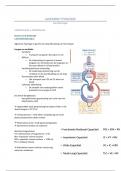Samenvatting
Full Summary Financial Markets (22/23)
- Instelling
- Universiteit Van Amsterdam (UvA)
This summary contains the complete content of the course Financial Markets. It covers the lecture slides used by the professor and related materials. I have previously written summaries for Athena and passed this course with an 9.5.
[Meer zien]













